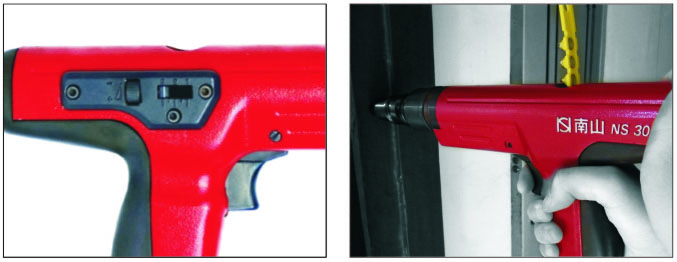I have made a sheet of annular friction sheet products many years ago. The parts are flame-cut into 6-mm thick 65Mn spring steel plates (see Figure 1), and sent to heat treatment for quenching and tempering, hardness HRC27-32, flatness ≤ 0.3. Figure 1 Schematic diagram of the friction plate parts Quenching and tempering hardness is easy to achieve, but the difficulty of this sheet-like part lies in the flatness requirement. The user wants to reduce the amount of rework after tempering and directly grind to the finished product size. The process route is: grinding burrs → preheating → salt bath furnace heating → nitrate salt bath quenching → washing → tempering (process curve is shown in Figure 2). Figure 2 Quenching tempering process curve of friction plate The tempering process in the process actually includes the leveling process. According to the workpiece material and quenching and tempering hardness requirements, the tempering temperature is in the range of 580 °C-610 °C, and the batches are fine-tuned up and down according to the change trend of tempering hardness. The product is tempered at this temperature, and the quenching stress can be completely eliminated. Therefore, it is possible to correct the quenching deformation of the workpiece in the tempering step. There is a dedicated pressurized tempering device dedicated to this type of part. However, it is obviously unrealistic to add specialized equipment to professional heat treatment plants based on external processing, uncertain products, and uncertain business volume. Therefore, we designed a screw-type clamping tool (see Figure 3), using a common well-type tempering furnace (furnace: φ1800 × 1500) for clamping and tempering, while the workpiece leveling, the effect is very good! Figure 3 screw clamp tooling In the figure, the top of the chassis and the underside of the top plate are finished by finishing, and the flatness is ≤0.05. After the friction plate is quenched and the nitrate salt bath is finished, slowly cool to room temperature, wash the residual salt into the water tank, and then stack it between the chassis and the top plate one by one. Since the workpiece is not tempered at this time, the warpage is large and hard and brittle, and the nut cannot be tightened. Keep the free stacking state into the furnace for about 2 hours, and then tighten the nut and then enter the furnace to continue the tempering. After tempering, it is air-cooled after being discharged. During the air cooling period, the clamping is slack due to the temperature drop, so as the temperature is lowered one by one, the screwing operation is continued 3-4 times, so that the workpiece is always clamped and cooled to room temperature. After the workpiece is removed, the pieces are placed flat on the inspection platform, and the inner and outer edge gaps are inspected with a 0.25 mm feeler gauge. After unqualified screening, press the direction of the concave and convex, convex and convex pairs, align and stack in the upper and lower pressure plate, press it and then re-enter the furnace to temper, to fill the tooling, can be mixed with old and new. Repeat the above operation when the air is cooled. Extended vision: In this case, the spring steel is tempered, requiring low hardness and high tempering temperature, which can be leveled in the tempering stage. If the spring hardness is required, such as RC48-53, then the tempering temperature should not exceed 400 °C. The leveling effect will be greatly reduced by the above method. This requires the design of a quenching clamp device that limits deformation during quenching (see Figure 4). In the tempering, the tempering is combined with the above-mentioned stacking clamping method. Figure 4
NANSHAN
brand Powder Actuated Tools have the product
series of:
• Universal
Powder Fastening Tool
• Fully-Automatic
Powder Fastening Tool
• Semi-Automatic
Powder Fastening Tool
• Specialized
Powder Fastening Tool
• Single Shot
Powder Fastening Tool
Features/Benefits
• Easy to use and
maintain
• Rugged Metal Housing
• Padded handle to
absorb recoil
• Ideal for general
construction applications
• Concrete forming
• Electrical fixture to
concrete/ steel
• Conduit clip to
concrete
• Commercial &
residential construction
Suitable Base Materials
• Normal-weight
concrete
• Concrete masonry
• Aluminum
• Steel
Powder Actuated Tools,Powder Fasteners,Powder Actuated Nailer,Powder Driven Nail Gun Sichuan Nanshan Powder Actuated Fastening System Co., Ltd. , https://www.nanshanpat.com




 Applications
Applications

